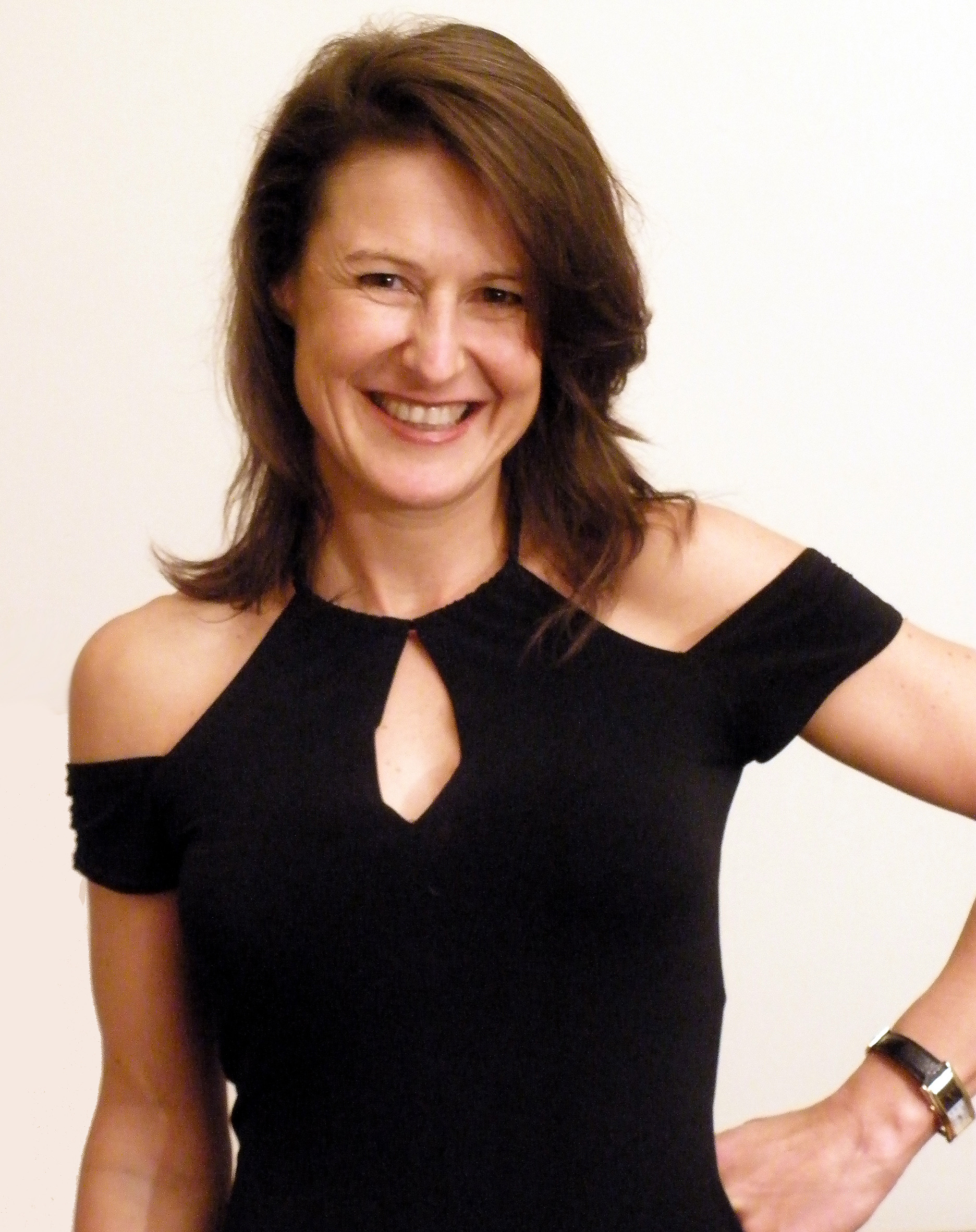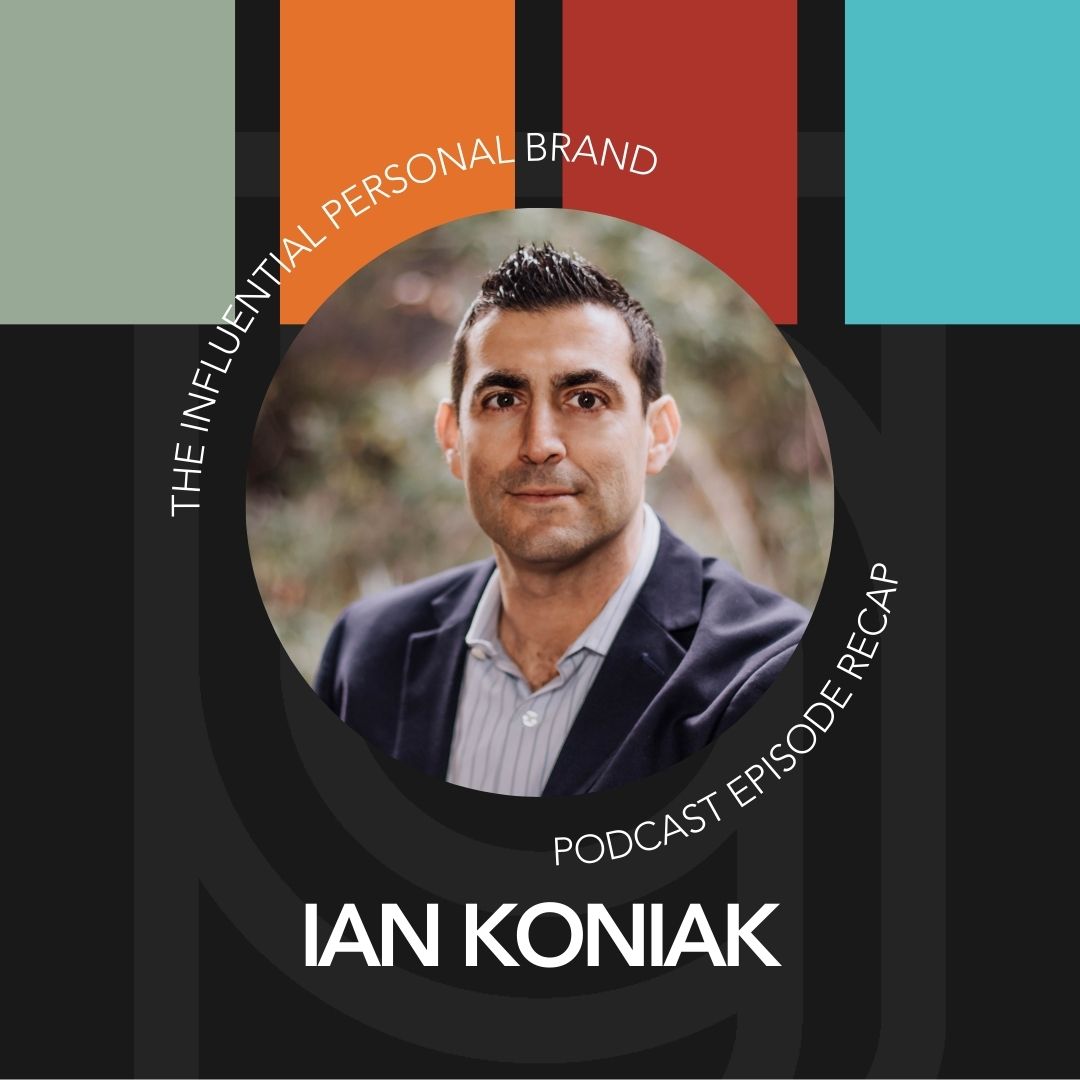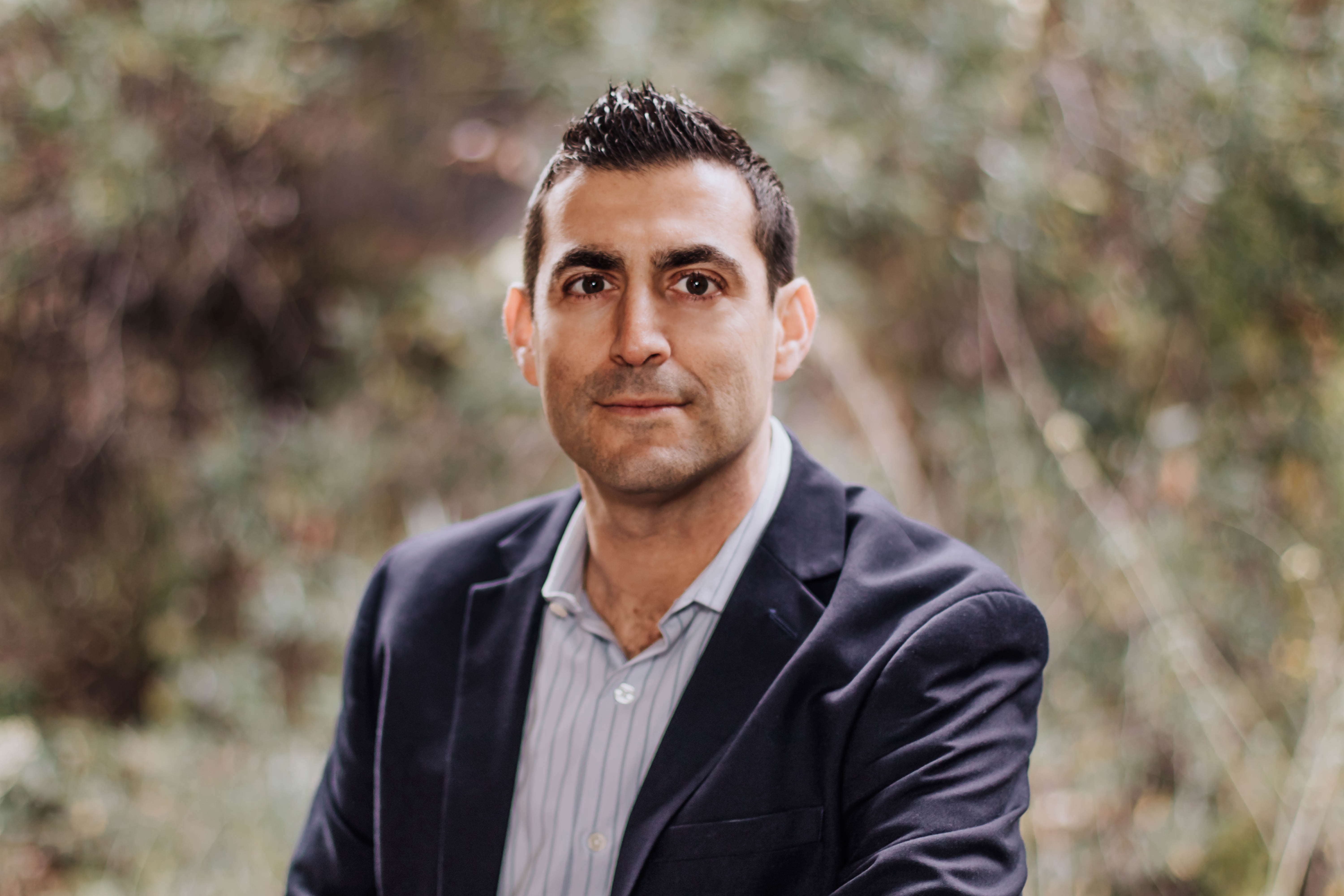RV (00:07):
Hey brand builder, Rory Vaden here. Thank you so much for taking the time to check out this interview as always, it’s our honor to provide it to you for free and wanted to let you know there’s no big sales pitch or anything coming at the end. However, if you are someone who is looking to build and monetize your personal brand, we would love to talk to you and get to know you a little bit and hear about some of your dreams and visions and share with you a little bit about what we’re up to see if we might be a fit. So if you’re interested in a free strategy call with someone from our team, we would love to hear from you. You can do that at brand builders, group.com/pod call brand builders, group.com/pod call. We hope to talk to you soon.
RV (00:55):
Well, my journey to become a speaker has been a, a fun one through lots of different twists and turns. And one of those things was having to learn how to be funny because I was not funny. And one of the people that I learned from in that journey is the man that you’re about to meet his name is David Glickman. I first attended one of his trainings. Oh gosh, I was in my twenties. And it was one of the most transformative pieces of my entire career. David and I now are kind of colleagues and we’ve known each other for years. He’s in the professional speaking hall of fame and he is kind of known for corporate customized comedy. But before he was in the speaking business, he was in show business and he worked with Steve Martin, Ellen degenerate. He appeared on evening at the improv.
RV (01:47):
He owned a chain of comedy clubs. And he’s just a funny dude and I’ve learned so much from him. And I actually recently we hired him because one of the things that he does is he owns a company that helps people write funnier speeches. And so I had a new bit that I was working on for a new audience. So it was a brand new piece of material and I wanted to get David’s eyes on it in his input. So he is continues even to this day to be one of my personal speech coaches, specifically in the realm of comedy. So I figured you got to meet David, we got to have him on, so welcome to the show.
DG (02:24):
Well, Rory, thanks so much. It’s oh, and again, you and I have known each other for probably close to two decades here, but but it’s great to see you evolve and you know, your humor has grown. I watch you now and I just go, ah, you got it. You, you know, you understand how important humor is to, to what we do for success here.
RV (02:44):
Totally. And, and it’s amazing. I, I I’ll say like, I, sometimes I’m genuinely amazed at how much of a skill this is and looking back at where I started to go, you know, if someone hires me do a speech, now they’re laughing their butts off. And I go, man, that is not who I was like, I did not know how to do that. And I think that’s, you know, the first thing I wanted to talk about is you really believe that humor can be learned to some extent, right? I mean, do you, do you, do you still feel that way? Do you feel more that way than you did 15 years ago? Or do you
DG (03:23):
No, I, I, no, I, I truly believe it’s a skill that can be learned. It can be refined. And it’s funny when we talk about humor, it, it, it’s almost like a dissecting a frog while they still alive. It’s just, you know, it’s, it’s people will listen and say, oh, well, that sounds very, very cut and dry. Well, the science of humor is cut and dry. It is, but yes, absolutely. You can learn it. And and as you’ve experienced, as you learn some of these tricks and techniques, you’ve just learned how to think. Funny.
RV (03:58):
Yeah. So w what does that mean? All right. So let’s, let’s dive into that for a second. So what does it mean to think funny? Like, why do we laugh? Or, or like, what are there’s different techniques here that apply, but like fundamentally, what do you, what are you trying to do that causes someone to laugh?
DG (04:21):
You’re trying to do something. That’s a surprise, something they’re not expecting. I’ll give you an example here. So I’m going to go back about 10 years, Rory that’s when you wrote your New York times bestselling book which was take the stairs. Everybody remembers
DG (04:38):
Copying seven steps to a trading, true success, but, okay. So let’s fast forward 10 years. You’ve learned through many of your clients. Not everybody has the same work ethic as Rory Vaden. So your new book for 2021 would be take the escalator seven less steps to achieving true success. Now, those who are just listening to the podcast on the video version of this, we’re actually showing a book. That’s a parody of Rory’s original book. So what we’ve done is just we’ve taken something that was already existing, and we’ve tweaked a word we’ve tweaked something by tweaking the original of something just a little bit, whether it’s a rhyme, whether it’s a letter I once spoke at a conference where the theme was together we’re better, but it was for the American wastewater association. And I said, oh, the original theme was supposed to be together. We’re wetter. You know, I just changed one word and it became funny. So to, to your question, it’s looking at words, looking at themes and how can we adjust, adapt them?
RV (05:51):
Hmm. Yeah, the surprise. I mean, I guess in one word you could say surprised that you’ll hear misdirection or, you know, you’re saying tweak, but like take the stairs, you know, as established as a theme. And then, you know, you kind of do that, that play and you’re it. And you think that’s basically what all of, all of humor comes down to is sort of this like element of surprise.
DG (06:13):
Right. But there there’s surprises. Step two, step one is observation. It’s looking it’s, it’s, it’s seeing. And again, I know this sounds kind of cut and dry, but the research that’s involved in any kind of, of, of making something funny is, is important. You have to kind of know the bigger picture, if that makes sense to, to be able to switch and adapt and adjust. Now, again, we’re talking primarily on customized humor, Rory for evergreen humor, you don’t need as much research. What I worked on for you was evergreen. That story will work anywhere anytime, hopefully for the next 10 years. Do you know what I’m saying? So there’s two types of humor, evergreen humor, and customized humor.
RV (07:04):
What’s the difference? What are,
DG (07:07):
Yeah. Evergreen should work all the time. There are comedians out there who have an act who they haven’t changed one word of it in 20 years. That’s evergreen. That means that humor. And again, for most speakers, professional speakers or professional business folks, if they create a presentation, they don’t have to necessarily change it. The humor that’s in there that’s crafted will work forever, but the customized humor is often funnier. If, if that makes sense, because it’s of the moment people are hearing it just about them in that moment. And it’s like, we’re all in on the secret together. We’re all in on this because only we know what that particular joke.
RV (07:55):
It’s like a inside. It’s like a big inside joke basically,
DG (07:58):
Right? Exactly.
RV (08:00):
A whole audience. Well, and I think what what’s super powerful is going so like for most of our clients and most not all of our clients are trying to be professional speakers. In fact, I would say even most of our members and clients, they’re just speaking as a marketing vehicle to like, to, you know, to, for people to find out about their service or their product or whatever it is that they offer. And it’s wonderful when you can have evergreen humor, because you have like signature stories about your life and your, whatever that you tell all the time. And once you have that down, then you kind of have like this sort of baseline of entertainment. And then the customized stuff is kind of like where you can have more fun and you can experiment. And I do think that’s part of what your magic like your secret sauce is customized. So talk, let’s dive in on the customized humor a bit. How do you even approach this? Because writing a joke is frigging scary by itself, but then going, okay, how do I write a new joke? Like a new thing that I’ve never tried out before. And I may never do again and go, but I’m going to try this because I think it’ll be funny this one time for this one audience, how do you, like, how do you even start with that?
DG (09:24):
And first of all, I want, I want to just, I’m going to back up to one thing you said there were, you saved, try it one time. If it’s a line you can use multiple times, one time is not always enough to get the reaction you want to test its efficacy. If it’s going to be funny now, if it’s the American wastewater association and that’s the only time you’re in front of them, then yeah. The, the water joke might be the only time. But to your, to your question, how do you figure out what’s funny, again, it goes back to the research. I always ask the same exact questions and looking at who the audience are. And again, for your clients, maybe who their prospects are, what are their pain points? What keeps them up at night? What are their frustrations?
DG (10:10):
And then you, you look at that and see, okay, how can I possibly find something about them that twists it? I call it the comment on the comment. If you ever look at a football game, you’ve got, you typically have two people broadcasting the game, the play by play guy and the color commentary guy. The play by play guy is the guy doing the content. The colored commentary is the funny line. In other words, here, I’ll give you, I’ll give you an example. I just wrote this for a client last week, he had a line in his presentation where he said by a show of hands who here is a multi-tasker and people would raise their hand. And then he’d go on to talk about multitasking. Well, the funny comment on the comment that I added was he says, by show of hands who hears a multi-tasker well, a really good multi-tasker could raise both hands and still be texting.
DG (11:08):
So that was the funny line. And it got a big laugh. He said, he told me later, you know, comment on the comment. It again, if your, if your audience Rory goes in, trying to be funny first, they’re going to be frustrated. They need to come up with their content. First, their sales presentation, first, their website. First don’t put the pressure of trying to be funny first, then look at it for how could we tweak this? What could we comment? What’s funny, what word could we change? What word is in our name of our company that could now be a funny acronym?
RV (11:46):
Yeah. Well, and so we, and we would, we would tell them, like, you know, we kind of think of it as baking a cake and you first got to get like the core ingredients in place, which is your content. And then you put the icing on, which is kind of like your stories. And then when you get to like the fancy frosting and the sprinkles, that’s more of like what the, what the, what the humor is. But what’s really cool about what you’re saying is even though, even though it’s kind of scary the idea of writing a joke and then writing a custom joke, that is this one time, what feels pretty safe and predictable to me is the idea of going, yeah, but if they’re frustrated about it, if this annoys them, if they’re angry about this, or if this is the thing, driving everyone nuts, it’s pretty safe.
RV (12:34):
It’s a pretty safe bet to go. Even if I can just find a creative way to bring it up, they’re going to laugh. And even if they don’t laugh, they’re going to feel special. They’re going to be like, oh, look at, look at what you, what you, what, you know, but it’s, it’s just the frustrations. So that’s, that’s weird to me. Like, why is it that things that are frustrating make us laugh? It’s kind of seems almost opposite. Like you go, if, if this is the thing that frustrates us, I wouldn’t want to bring that up.
DG (13:05):
Knowledging it you’re, you’re, you’re talking about what everybody is experiencing and the same thing works for a sales call, or, you know, if there’s a dentist and, and he, or she has prospective patients, you know, you, you, you then make, do you make note of the tooth pain and then you come up with something clever in your marketing materials to that. The way I look at it is, you know, we, we do business with people that we like. We like people that make us laugh. It’s this natural progression. So every opportunity you can have to add, the humor is going to just build your brand that much better.
RV (13:49):
Yeah. And, and the growing, just like to use the dentist example, you know, is to put yourself. So it’s one thing, if I’m a speaker and I am coming to speak at an event, and I’m sending them a pre-program questionnaire, I’m doing, going to their website, or I’m doing interviews, and I’m saying, Hey, what are the things that frustrate you? But if I’m a dentist, I don’t have to ask. I know I already know, because I hear it every day. It’s just kind of thinking, like, I think this is huge. That step one is observation. As you’re going ask yourself, what are they scared of? What are they afraid of? What is annoying to them? And then, and then basically just find it, find a clever way to, to bring it up. Is that, is that
DG (14:33):
Yeah. Okay. So your, your example there of the, of the dentist I did a punch up for a gentleman who consults in the dental industry not too long ago. And I don’t know how we got to it. He had something in his original content that drove my idea because I was thinking of, well, what frustrates your prospects and their eventual clients. And we came up with something where it says on the website the tooth, you can handle the tooth. And we had the picture from a few good not a few good men, the the Jack Nicholson one. So by doing, instead of the truth, the tooth, you know, this becomes now something very funny on the website. You can handle the tooth and tooth is italicized. Again, as you and I sit here, maybe not hilarious, but for the person looking at it, who’s thinking about their tooth. That hurts. Bam. We, you know, we’ve, we’ve hit, we’ve hit a nerve, no pun intended.
RV (15:32):
Well, and yeah, just for everyone to know, like the reason why it’s not funny to hear two people talking about comedy is because there’s no surprise. Surprise is the whole element of laughter. And when you, when you’re sitting here listening to it, that’s what makes comedians so amazing is like, it’s one thing when you’re in a business presentation, like for all of us, we actually don’t have to be that good because no, one’s expecting us to be funny. Like you come in as a, as a speaker, as a financial advisor, as an accountant and attorney as like, like no one expects you to be funny. It’s different. When you tell people you’re a comedian, they they’re sitting there expecting you to make them laugh, which is way harder. So it’s a, we have a little bit of it easier. This is like you know, almost like just a little covert operation for, for most of us. And people will laugh because they’re not expecting it. And so the bar is set a little bit lower. Okay. So you first observed, so I liked that. I get that, that feels doable. And, and by observe and research, I’m just going, like, what are their pains? What are their annoyances? What are their frustrations? And then what’s, and then what’s next.
DG (16:45):
Well, the, and you, you look at it. There, I mean, again, there are certain tricks and techniques the rule of three, I mean, that’s an old comedy route, a rule where you, you list three things in a row, the first two normal. And the third one is the surprise. It’s the, you know, the, the derailment, the, you know, the one you’re not expecting again, most of your listeners are just listening to this. They can’t see I don’t have a lot of hair, so my three might be. I remember when I first started, I had dreams, I had hopes I had hair, you know, boom, boom, switch like that. So that’s a rule of three. Here’s a stupid one, but it works. Odd numbers are funnier than even numbers. Rory, I have no idea why, but I have tested this. I have road tested. This a seven is funnier than a six. I don’t know. I don’t know why planned mispronunciations, if there’s a word in your, you know, your audience’s a vernacular in their, in their industry that is hard to pronounce, perhaps you pretend to mispronounce it twice. And then the third time you give a synonym. So you might say something like, they know there’s an old colloquium, there’s an old colloquium. There’s an old saying that sometimes would it be okay, so you, boom, boom, switch like that.
RV (18:16):
Yep. Well, and even that is kind of, it comes back to that frustration concept is it’s like, it’s this annoyance the of saying the word colloquialism is so difficult, it’s so difficult. And you’re, you’re like commenting on the thing that frustrates them, which is exactly what comedians, that’s, what stand up c’mon comedians do. And it’s nonstop, right? They’re telling jokes about being married. They’re telling jokes about their kids, about going to the airport, about paying their taxes about like, and all they’re doing is commenting on the things that frustrate us somehow, which is it’s amazing how simple that is.
DG (18:53):
It really is. And I have yet to come across an industry. I mean, I I’ve either spoken to or punched up, you know presentations in a myriad of industries. And I’m yet to find one industry that doesn’t have at least top 10 frustrations. I mean, I’m, I’m on a, I’m on a call tonight with a group of pharmacy students to get my research done for a presentation for pharmacy. So I’m gonna you know, just ask them, you know, tell me everything that’s frustrating too. I’ll, I’ll get 40 things and I will then turn those, what we should do is do a part two. I should come in, you know, in another podcast and tell you here’s where the 40 things that were frustrating. And here’s what I found funny in them or how we made it funny.
RV (19:41):
And, but the, the essence of that is going, what is sort of a surprising way I can bring that up or like a natural way to kind of bring it into the presentation? Yeah,
DG (19:51):
Yeah. I mean, and again, it’s hard to explain it without you know, without a concrete examples. So again, if for argument’s sake like going back to the customization, if you’re in a venue, if you’re doing a sales pitch or a speech in a room that is freezing, you know, like you know, there’s just, you know, the, everybody is sweaters and this and that. You’d acknowledge it by saying something like, I’m not sure if the folks at this hotel know, but there is a brand new invention it’s called a thermostat or something like that. Again, you kind of soft and then boom hit. Now. We’re not trying to make people comedians, you know, that’s, that’s not sure that that is not the goal here at all. It is just to find those moments of levity and the way I always look at humor, it’s like an EKG. In other words, you’re talking, you know, normal, normal content laugh, normal, normal content laugh. And that these moments of humor should be as, as much as possible throughout your entire, you know whether it be your website, your pitch, your, your speech, your presentation, whatever that might be.
RV (21:07):
So other than frustration. So I get that one. And, and again, like, even though you’re saying it helps to have a specific example, but it would be like, okay, let’s pretend for a second. If you were a standup comedian and you were going to write a set or a bit on marriage, the very first thing you would do is go, what frustrates people about marriage, right. And it’s like, whatever my wife is telling me, always what to do, or my husband is in spends forever in the bathroom. Or is that the, is that the best place to look or are there, are there other places additionally, that you look or do you kind of focus on frustrations as like that’s the, that’s the, the safe, go-to
DG (21:47):
Easiest thing, because it’s the commonality of everyone. If you were doing something on marriage and you, and again, you just give the example, let’s say of the bathroom. And again, this, this isn’t anything like I would say for a corporate audience necessarily, but and again, I’m just riffing here, but something like you know, my, my wife says you know put the seat down. But you know, she only has to remind me about 117 times per day. You know, it’s exaggerates exaggeration, you know, normally it’s a once or twice, you know, but the, it’s the exaggeration of that watched comics, study comics, all those books, but your, your listeners can’t see it, but there’s hundreds of books behind me. Every single one of them is either a biography or an autobiography of a comic or a textbook on humor. And you learn, you observe, you watch.
RV (22:42):
Yeah. Exaggeration is is is a core part of this, but like, even on social media there you know, th there was one that is like you know, all these mommy blogs, like mommy accounts and stuff. And there was one that I saw that was like this, that said, I birthed a baby and less time than it takes my husband to take a poop. Right. And it’s like, so they’re, they’re taking a frustration, then they’re acknowledging it, and then they’re exaggerating it. And it it’s almost like you observe it, you acknowledge it, and then you exaggerate it.
DG (23:18):
Yeah. That’s, I mean, you, you kind of nailed it on the, on the head there. I mean, that is, that’s really it, but at one word of caution, though, especially for folks who are not used to using humor, you do have to just make sure that your humor is appropriate and relevant. That’s where some newbies get into trouble sometimes. My mantra is when in doubt, leave it out. You know, if you’re, if you’re, if you’re the least hesitant, oh, good. This offend somebody, you know, and that, and that, that bar keeps, you know, changing on what, what might be appropriate and what might not be. So I, I wanna make sure we put that in the podcast today that when in doubt do leave it out.
RV (24:04):
Yeah. I mean, that, that’s really huge because that’s the one time it can backfire is, which is one of the reasons why self-deprecating humor is so wonderful because you’re just like, you’re less likely to offend someone you’re less likely to like, run into a I mean, they just, they tend to be a little bit more forgiving when you’re, when you’re talking about yourself, like your hair joke, right. If you call someone else bald, that’s more dangerous than if you you know, use it. You’re like on yourself.
DG (24:36):
And also there’s, there’s a misconception out there that that humor, that tragedy plus time equals humor. People always, oh, you can’t talk about something bad now, you know, in the news, but you can talk about it later tragedy plus time equals humor. That’s not always true. There are certain things that are topical that just you know, I speak a lot in the healthcare world and I’m yet to write one joke about COVID, you know, I’ll write things on the periphery of it, but the disease itself, you, you, you know, you can’t poke fun at it. So again, again, watching your subject matter it just, you know, you just wanted to be very careful.
RV (25:21):
So news topics is another great place to look, right? Cause you know, like when you say observe it, there’s a couple things that jump out to me, you know, the safe one is like self-deprecating stuff, which has also ever evergreen as you describe it. But it’s like if I come out in shorts, which I don’t, but if I did, everybody would notice that I have skinny legs. That’d be like every single person would notice it. And so I could acknowledge it, exaggerate it. Like if I just go, what are people thinking? When they look at me, that’s observe it. Then I come out and acknowledge it. And I say, you may notice that, you know, my legs are, you know, make, make flamingos jealous or something like that. Right. So the, the, so you’ve got that, then you’ve got sort of the customized just frustrations, but then another place to, it seems like to pick up some good humor is in inside of pop culture. Now you you’re talking about COVID is like a bad example, which I would agree, right? Like that’s not a laughing matter and it, you know, it, it, it certainly wouldn’t be for at least a very long while. But, but there’s certain things in pop culture that you can get away with you.
DG (26:32):
Oh, absolutely. Pop culture. I, I subscribed to entertainment weekly, not so much because I want to, you know you know, read, you know, all, all the nuances. I want to go big picture. I want to see what shows are the most popular, what movies, what podcasts. So I can drop in a reference to Ted lasso. And 80% of my audience is going to know if I say, well, I’m not going to go all Ted lasso on you here with some homespun wisdom dropping in just a pop culture, reference, you know, the audience. He said, Ted lasso like that. And to your point earlier, it doesn’t have to be as funny because you’re perceived as in the know. And a lot of times when I would hit a town I would look in the local news. You know, whether it’s online or some, some towns even still have hard copies of newspapers. It’s pretty cool. But I’d look at the local news and see, you know, okay, let’s say there’s a restaurant that’s closing. So let’s say it’s called the spaghetti barn. So everyone knows the spaghetti barn closed in, you know, Cincinnati. So I might open by saying, well, your, your, your meeting planners have been so, so kind to me, they gave me a free dinner for 10 at the spaghetti bar and everybody
RV (28:03):
Goes nuts.
DG (28:04):
Yeah. They gave me something of no value. So again, that little bit of research have you ever had Sam Richter on as a guest on your podcast? I don’t know if you’ve had,
RV (28:14):
Oh man. I don’t know that. I don’t think we have, but I, we should, because he’s a genius. He’s a great speaker, but he’s got some great systems and stuff I’ve learned. I’ve learned some cool stuff from him over the years.
DG (28:25):
Yeah. Cause he’s the master at learning research of research you know finding stuff that you can then, you know, make funny. I use a questionnaire and I’m great at interviewing. I look at my own programs. I do probably 80% of my time is spent researching you know, and, and tweaking and writing and then presenting it’s the easy part.
RV (28:53):
Gosh. Yeah. And when you’re, when you’re back to the pop culture things, you’re really just looking at headlines cause it’s gotta be a big enough, which makes it easier for you research wise, because if it’s not a major headline, not enough of the people in the audience will know it. But if it’s a, if it’s a major headline, it’s pretty safe to think that like everybody’s going to know it. And it almost feels like the more recent something is and the more relevant or like customized it is. The more forgiving the audience will be in terms of how funny it has to be. But it’s like, if you’re talking about the spaghetti barn, if that just happened, you know, last week and everybody knows about it and it’s hyper specific to town, that’s even funnier somehow than what’s going on in the political election that everybody knows about.
DG (29:49):
Absolutely. And, and just, just again, another little caveat there I never do political humor or write political humor. It it’s just become, unfortunately, just too risky. Because in any given audience or any given prospects 50 up potential, 50% of that prospects, you know, or, or audience will not agree with whatever that humor might be. So, you know, the late night talk show guys, you know, th th you know, they certainly show, you know, what their thinking is, but for those of us in business, my opinion is that you can’t show it. For, for the purposes of humor, you, you just
RV (30:35):
It’s a mixed, a mixed audience,
DG (30:38):
Right. So I do look for current things, pop culture things, but I’m very cautious to steer clear of the you know, there’s, and there’s great political humor that you could use, but it’s, it’s risky.
RV (30:52):
Yeah. So I guess you’d say any, anything that’s super controversial or emotionally charged is best to just kind of stay away from it. It’s more, but it’s, but it’s more like the lighthearted things like Ted last was a great, a great example. Our pastor this last Sunday made a reference to Ted lasso. And everybody went nuts just because he said Ted lasso in church.
DG (31:13):
Yeah, exactly. That. Or if you just look at again entertainment weekly or in any kind of pop culture kind of thing, you know, we’ll just give you those high level things. My point on it is you don’t have to necessarily know it, let, let the you know, the, the other, you know, pop culture writers do all the heavy lifting for you. Although I started watching Ted lasso and it is funny and it is,
RV (31:39):
Yeah, it’s great. It’s super, it’s, it’s, it’s super cute. We, we love it because J doesn’t like to watch any shows that have violence or drama or sickness or anything, she only like shows that make her laugh. So we’ve been, we’ve been all into.
DG (31:55):
And, and that’s a great example. So something like the Ted lasso, the dialogue in there, what you’re laughing at most of the time are those comments on the comment, you know, it’s, it’s the storylines being driven. We’ll call that the content, or, you know, in your listeners world, that might be their sales presentation. But what you laugh at are those comments on the common Ted lasso, we’ll make some remark that is hilarious based on what just happened or what just was said, if that makes
RV (32:27):
It’s kind of that, like, that analogy used earlier of like, you’re basically a commentator, like I’m comedian is basically a giant commentator on life. It’s like, here’s everything we all go through and they’re like, just commenting on it. Right.
DG (32:42):
And then another thing, if, if your listeners can find something that works in a humor vein and can put it early on in their presentation, there’s a thing called a callback. And I think you you’ve talked about that before in other podcasts, a callback is where you bring back that thing that got the laugh again for you. No more lamps.
RV (33:04):
Yeah. So yeah, we, we haven’t talked, we haven’t we teach callbacks in our in our world-class presentation crafted event, but we actually haven’t talked about it on the podcast. So take a sec. Cause, cause here’s, you know, part of what I’m hoping people see, and this is something that I’ve learned from you and others is like, you don’t have to just like sit down and think of a joke. It’s there’s these places that it comes from and you go, what are self-deprecating things I could bring up? What are frustrations that people have what’s going on in pop culture. And then callbacks is another easy place to look for for humor. And it’s like, it’s a lay-down right.
DG (33:46):
So there there’s a piece I do in my own presentation about I use a funny prop it’s a, it’s a restaurant pager, like where you’re waiting for a table. And again, your listeners won’t see this, but anyone watching the video it’s hard to see because of the lighting there, but I have a little one it’s actually an ad specialty, put my name on it. So early on in the program, I get a huge laugh on my tables, ready, my tables, ready to go. The, the premise is that I carry my own with me, you know, my own restaurant pager. And it gets a huge, huge lamp. Well, what I do Rory is, and then I put the blinking one in my pocket. And then later on, you know, there, there are, I think, three other moments in the speech where I got my tables ready, my tables ready. And again, out of context right now, it’s not that funny in the moment. It’s hilarious. Cause we’ve called back to a laugh again. That they’re all kind of in, on, in, on the secret there.
RV (34:47):
Yeah. All you have to do, what’s amazing about callbacks is it literally doesn’t even have to be a, a setup or a punchline or any, like, all you have to do is say the thing that made people laugh earlier. The other thing that’s really clever for using callbacks is it, it doesn’t have to be a callback to your own stuff. It can be a callback to the speaker who was right before you, or earlier that morning, people go bananas over that.
DG (35:11):
They think you’re so much more clever than you might have snarly.
RV (35:17):
That’s why I’m in it. That’s why I’m interested in. That’s why I like, I like it. We’ll lose her.
DG (35:22):
Those are all tricks and techniques that will work. If I’m, if I’m speaking in a morning program, if there’s a general session speakers before me, I always go in the day before, you know, assuming my schedule can, can make that happen, to watch every other general session speaker. I do a, you know, a wrap-up of every other one who’s gone on before me. And again, it’s just acknowledging certain things they said. And then I comment on their comment, not my comment, like you said, I comment on their comment. So even if you have a business professional who might be following other sales presentations, you know, you, you know what your competitors are selling, what their bullet parts are, bullet points, excuse me, are, you can chew, you can gently make fun of your competitors. You know if I’m working for a T-Mobile and I, and I’m pitching against Verizon, you know, Verizon says they have great coverage, you know? Yeah. In, in zip code 3 7, 9 1 9, you know, again, I mean, again, I’m just riffing here, but you know, poking fun, gentle fun at your competitor and the prospects will laugh. Hmm.
RV (36:33):
Yeah. That’s and hecklers actually I’ve noticed are another place that you can get call backs to. Sometimes someone will say something out funny from the audience, some of the best lines I’ve ever written came from something I said, and a heckler said something and everybody laughed and I wrote it down and I’m like, thanks for that gift. I’ll I’ll add that myself next time. Because if it, if it worked in that moment, it’ll it’ll work again. Well this is awesome, David, and, and, and a couple of things you all, so you can tell by listening there, there’s, there’s, there’s a science to this and an art. There is there’s skill. A lot of this is experience. And I would tell you listening that w if you can have some evergreen content, like, for example, your backstory and almost every presentation you give at some point, you’re going to tell people about who you are, where you came from.
RV (37:31):
I think having your own little mini kind of semi stand-up comedy routine about your backstory. If you could work on that one little bit, you can use it in pretty much every presentation you give for the rest of your life. And it doesn’t have to be Ellen degenerate kind of funny. It can be two or three little chuckles that just give you confidence and break the ice and, and, you know, help you feel comfortable before you move into your speech or your podcast interview, or your sales presentation, or your internal company meeting. And if you struggle with this, David David can help you. So he’s, he’s one of our trusted vendor partners. So if you email us, if you go, Hey, I want some help writing this, just send an email to info at brand builders, group.com and put funnier speeches in the subject line. So email info at brand builders, group.com put funnier speeches in the subject line. And then we’ll connect you with David. Of course you can go find him, you know, on your own, but we’ll, we’ll connect you with him. And you know, he’ll talk with you to see if, if, if you’re someone he can help and hopefully he can help you because if David can’t help, you know, but
DG (38:46):
I think I can, I have worked with, with other business professionals, who’ve dealt with counting law and, and some of the most, you know, you would think dry subject. I believe that every topic, every industry has room for humor. I really do
RV (39:06):
Totally. And I like, I really am taking away. One of the big things from this conversation is don’t, don’t do it in a mean way. Don’t, don’t do it in a risky way. Don’t offend people. You don’t have to there’s enough light, safe, common frustrations that we all have. There’s enough pop culture references. There’s enough callbacks. There’s a there’s enough little quirks of everyday life that you can just observe it, acknowledge it, exaggerate it, and, you know, get a chuckle and have a great day for everybody. So David is thanks so much for coming on the show, man, and as always, thanks for your, for your mentorship and counsel and yeah.
DG (39:46):
Oh my pleasure. Thank you so much. It was a great to be with you today.













